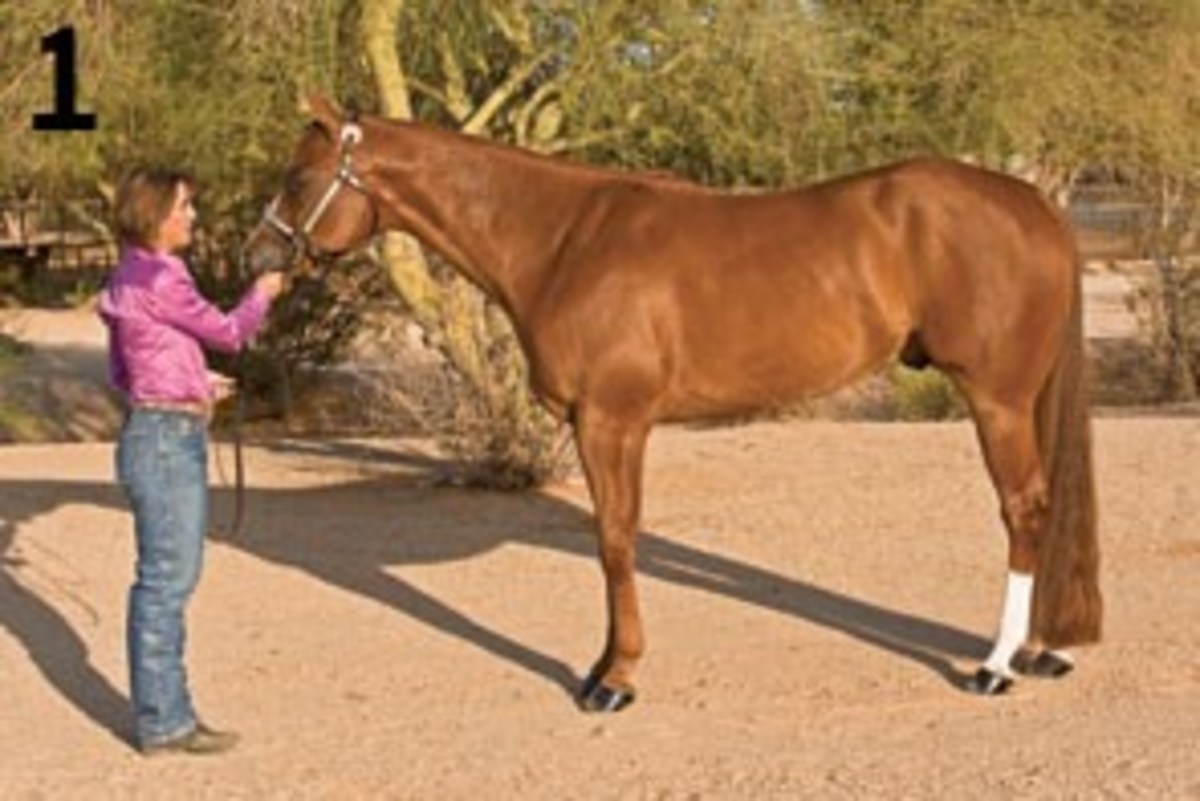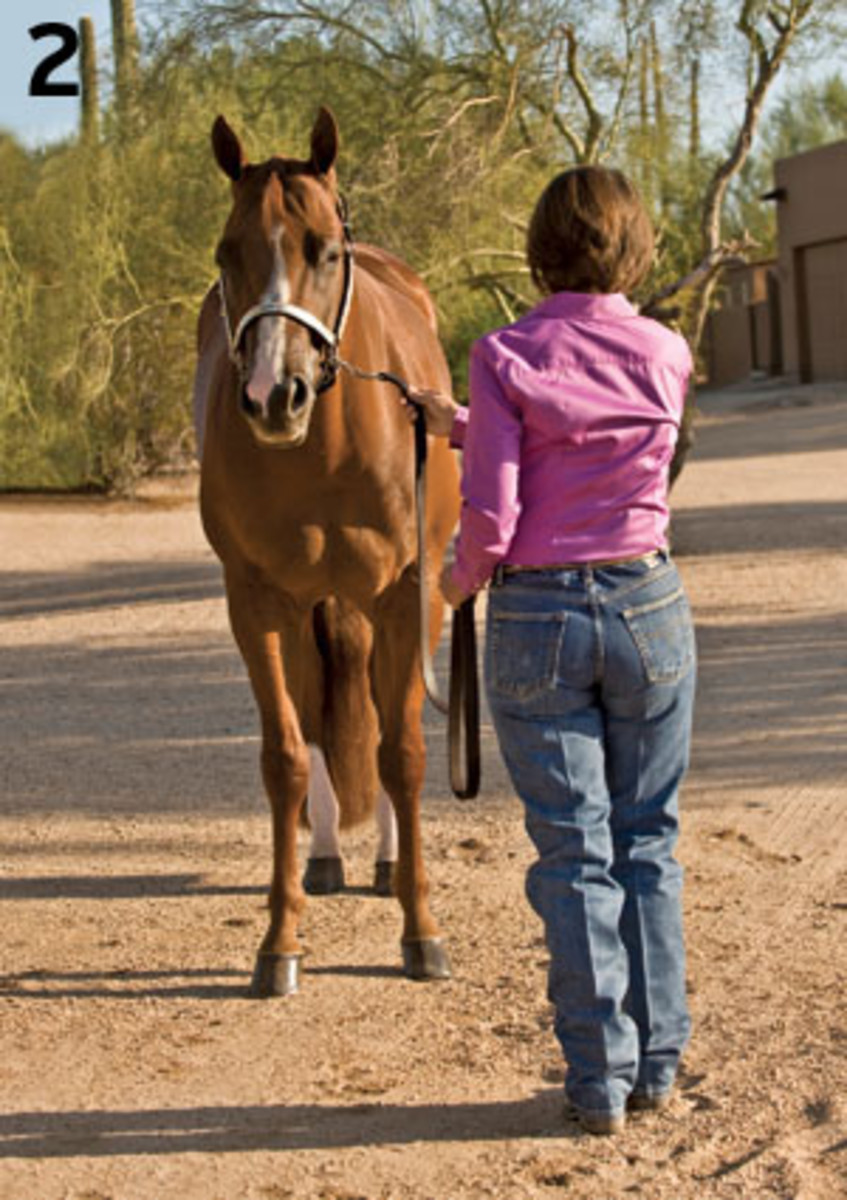Lesson Objective
If you compete: Learn perfect position for backing your horse in showmanship classes.
If you don’t: Learn to properly cue for a back-up from the ground to increase your skills.
The expert: Deanna Searles, Scottsdale, Arizona; successful trainer, exhibitor, and amateur/youth coach.
What’s the Big Deal With Backing Straight?
In a showmanship class, keeping a straight line and an effortless look when backing your horse from the ground can be tough. Position pitfalls can cause your horse to balk at your cues and back off track, even swinging his hind end out onto a circle.
Outside the show pen, a horse that backs handily from the ground is great to have around. You can maneuver him out of tight spots and generally have better handle on him.
By seeing the correct body placement and recognizing the position flaws I’ll identify here, you’ll learn where to be and what to avoid the next time a showmanship pattern—or any situation—calls for a back-up.
Try it Out
1. This illustrates correct position from which to ask for a back-up from the ground. I’m standing to the left of my horse’s head, with my right hand on the lead, which makes soft contact with my horse’s face. By my keeping steady rearward contact on the lead and walking a straight line to the end point of my back-up, my horse will present an effortless appearance as he backs on a straight line.

2. This view shows how far away my body is from my horse, the direction my toes face, and the contact I have on the lead when I ask him to back.

1. We both step off for the maneuver at the same time, with my horse stepping back with his left foot while I step forward with my right. We look in sync with each other, and my horse responds quickly and quietly to my cues.
2. Here, my horse looks a lot less willing and less relaxed. We’ve stepped off in sync, but I’m placing too much downward pressure on the lead, which causes my horse’s head and neck to bow and bunch up. It doesn’t present a pretty picture.
3. In this instance, my right shoulder is turned too far toward my horse. This causes pressure on the lead that cues the horse to move his hind end to his right, rather than stay on a straight line. Furthermore, I’m too close to his shoulder, and you can see that I nearly clipped his left front foot with my left foot.
4. This is a dangerous position to be in, not to mention incorrect. I’m standing directly in front of my horse. If something spooked him from behind, he could lunge right on top of me or run me over. Or if something bothered his face, he could flip his head right into mine. His monocular vision doesn’t allow him to see me when I stand directly in front of his face. n

DEANNA SEARLES. A top open competitor and winning youth and amateur coach, Deanna trains horses and riders at Circle S Ranch with her husband, Jim. They have two children, Taylor and Trent.






